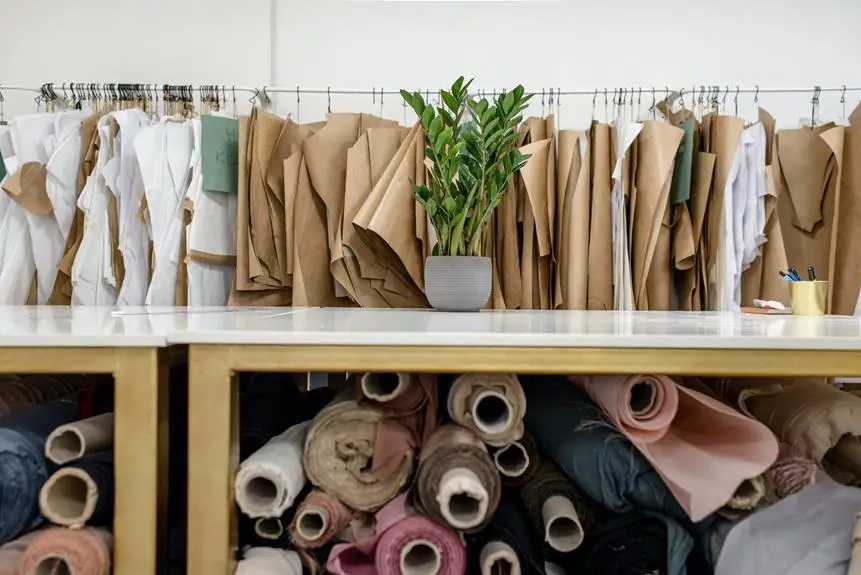Are you scouring fabric properly?
Fabric scouring is the cornerstone of achieving optimal results in textile processing. It's like laying the foundation for a sturdy building; without a thorough scouring process, subsequent treatments and finishes may not yield the desired outcome.
Understanding the intricacies of fabric scouring is crucial for mastering the art of textile production. In this guide, we will delve into the importance of fabric scouring, common mistakes to avoid, the process itself, best practices, and tips for achieving impeccable results.
By honing your fabric scouring techniques, you can elevate the quality and performance of your textiles. Let's explore the world of fabric scouring and unlock its full potential.
Key Takeaways
- Fabric scouring is crucial for achieving optimal results in textile processing.
- Common mistakes in fabric scouring include insufficient pre-treatment, inadequate rinsing, skipping inspection for visible impurities, and using unsuitable scouring agents.
- The fabric scouring process involves chemical treatments to remove impurities and ensure uniform dye uptake.
- Best practices for fabric scouring include thoroughly inspecting the fabric, selecting the appropriate scouring agent, maintaining strict control over temperature and duration, and gently agitating the fabric during scouring.
The Importance of Fabric Scouring
If you want to ensure that your fabrics are thoroughly clean and free from impurities, it's crucial to understand the importance of properly scouring them. Scouring fabric offers numerous benefits, including the removal of natural waxes, pectins, oils, and other impurities that may be present in the fibers. This process also helps to eliminate any residual chemicals from the manufacturing or dyeing processes, ensuring that the fabric is safe for use and wear.
There are various methods of scouring, such as using alkaline or enzymatic agents, as well as employing high temperatures and agitation to effectively cleanse the fabric.
Proper scouring not only leads to cleaner fabrics but also enhances the dyeing and finishing processes by allowing for better dye penetration and more uniform finishes. Additionally, scouring helps to improve the absorbency and wettability of fabrics, which is crucial for applications such as printing and dyeing.
Understanding the methods of scouring and their benefits is essential for anyone seeking to master the art of fabric preparation and ensure the quality of the end product.
Common Mistakes in Fabric Scouring
You may encounter common mistakes when scouring fabric, potentially compromising the cleanliness and quality of the end product. It's crucial to be aware of these errors to ensure proper fabric preparation and textile cleaning. Here are some common mistakes to avoid:
- Insufficient Pre-Treatment:
Skipping pre-treatment steps such as soaking the fabric in a suitable detergent solution can result in ineffective removal of impurities and residues. This oversight can lead to subpar scouring outcomes.
- Inadequate Rinsing:
Failing to thoroughly rinse the fabric after scouring can leave behind detergent or impurities. This can cause issues in subsequent processing stages and affect the final fabric quality.
Understanding the Fabric Scouring Process
Wondering how fabric scouring ensures the removal of impurities and prepares the material for further processing?
Fabric preparation through scouring involves a series of chemical treatments that are crucial in achieving high-quality end products.
The process begins with the removal of natural impurities such as waxes, pectins, and oils, as well as any added substances like sizing agents and dirt that may have accumulated during weaving or storage.
This is essential to improve the fabric's absorbency and dyeing properties.
The fabric is then subjected to a series of chemical treatments using scouring agents, surfactants, and alkalis to effectively clean and prepare the material for subsequent processing, such as dyeing or finishing.
Through scouring, the fabric's surface tension is reduced, allowing for better penetration of dyes and chemicals in the following steps.
It also ensures uniform dye uptake and enhances the fabric's overall quality.
Understanding the intricacies of the fabric scouring process is fundamental for achieving optimal fabric preparation and subsequent processing.
Best Practices for Fabric Scouring
To achieve optimal results in fabric scouring, start by thoroughly inspecting the fabric for any visible impurities or contaminants. This initial step is crucial in fabric preparation and ensures that the scouring process effectively removes all unwanted substances.
Once the fabric has been inspected, the following best practices should be observed for effective textile cleaning:
- Selection of Scouring Agent:
Choose a scouring agent that's suitable for the specific type of fabric being processed. Different fabrics may require different scouring agents to achieve the best results.
- Temperature and Time Control:
Maintain strict control over the temperature and duration of the scouring process. This ensures that the fabric is thoroughly cleaned without causing damage or excessive wear.
Tips for Achieving Optimal Fabric Scouring Results
If you want to achieve optimal fabric scouring results, it is important to carefully follow the recommended temperature and time controls for the scouring process. Proper fabric preparation is crucial in the textile industry, and here are some tips to help you achieve the best results:
| Tips for Optimal Fabric Scouring Results |
|---|
| Use hot water (around 60-80°C) for natural fibers and lower temperatures (around 40-60°C) for synthetic fibers. |
| Ensure the fabric is fully submerged in the scouring solution for the recommended time. |
| Agitate the fabric gently during scouring to ensure even penetration of the scouring agent. |
| Rinse the fabric thoroughly after scouring to remove all traces of the scouring agent. |
Following these tips will help you achieve thorough fabric scouring without damaging the fibers, leading to better dye penetration and overall fabric quality. By paying attention to the recommended temperature and time controls, you can ensure that your fabric is properly scoured and prepared for further processing in the textile industry.
Frequently Asked Questions
What Are the Different Types of Fabric Scouring Agents Available in the Market?
When scouring fabric, consider fabric compatibility and safety precautions. Commercial scouring agents offer convenience, but homemade options provide customization. Evaluate the fabric's needs and choose the appropriate agent for optimal results.
Can Fabric Scouring Be Done at Home Without Specialized Equipment?
You can scour fabric at home without specialized equipment using DIY techniques like boiling with a mild detergent, or soaking in a mixture of water and baking soda. These methods effectively remove impurities and prepare fabric for dyeing or printing.
Are There Any Environmental Considerations to Keep in Mind When Fabric Scouring?
When scouring fabric, it's important to consider the environmental impact. Utilize sustainable practices by choosing natural detergents, minimizing water usage, and properly disposing of waste. By being mindful, you can reduce your ecological footprint.
How Can Fabric Scouring Impact the Longevity of Different Types of Fabrics?
Scouring fabric properly involves considering the impact of temperature and pH on fabric longevity. Different scouring methods can have varying effects on fabric durability, so it's crucial to understand how each method affects different types of fabrics.
What Are Some Alternative Methods for Fabric Cleaning for Those Who Cannot Use Traditional Scouring Methods?
To ensure gentle fabric care, consider eco-friendly alternatives for cleaning. Options like using plant-based detergents or hand-washing with mild soap can effectively clean fabrics without the need for traditional scouring methods, preserving their longevity.
- Can You Get Organza Wet? - April 23, 2024
- Why Is Organza so Popular? - April 23, 2024
- What Do You Wear With Organza? - April 23, 2024




